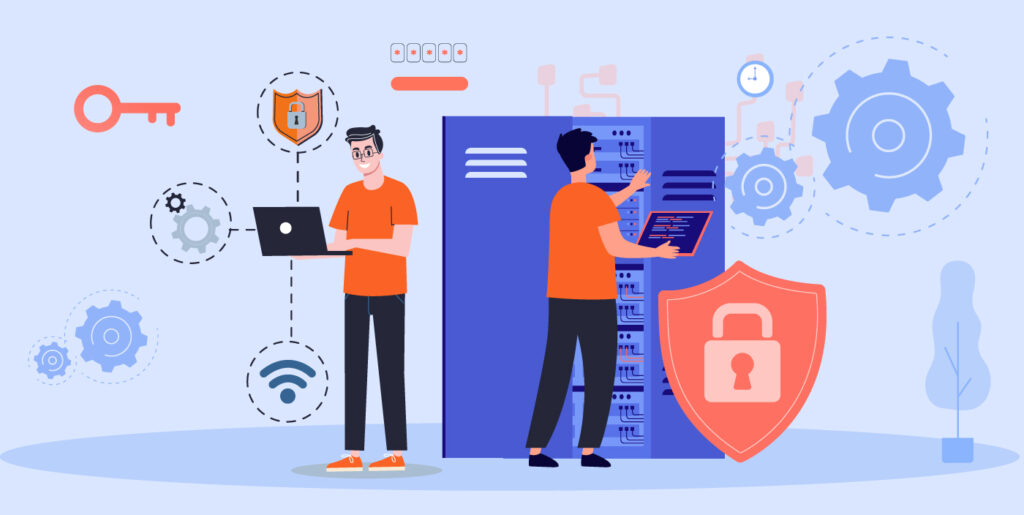In the digital age, managing access to sensitive systems and data is more crucial than ever. Privilege Access Management (PAM) has emerged as a key component of cybersecurity strategies, designed to protect an organization’s critical assets by controlling and monitoring the use of privileged accounts. As cyber threats become increasingly sophisticated, effective PAM solutions are vital for safeguarding against unauthorized access and minimizing potential damage from breaches.
Understanding Privileged Access Management
Privileged accounts—such as administrative, root, or service accounts—hold elevated permissions that grant users extensive control over systems and data. Because of their broad access rights, these accounts are prime targets for cybercriminals. A compromised privileged account can lead to significant security breaches, data theft, and operational disruptions.
PAM involves a set of practices and technologies designed to manage and monitor privileged accounts, ensuring that only authorized individuals can access critical systems and data. It encompasses a range of functions, including:
Credential Management: Storing and managing privileged credentials securely to prevent unauthorized access. This includes using encrypted vaults and ensuring that passwords are strong and regularly updated.
Session Management: Monitoring and recording privileged sessions to detect and respond to suspicious activities. This allows organizations to review and audit actions performed by users with elevated permissions.
Access Controls: Implementing policies and controls to restrict access to privileged accounts based on the principle of least privilege. This ensures that users only have access to the resources necessary for their role.
Audit and Compliance: Generating detailed logs and reports of privileged account activities to support audits and demonstrate compliance with regulatory requirements.
The Importance of Privilege Access Management
Mitigating Insider Threats: Insider threats, whether malicious or inadvertent, pose a significant risk to organizations. PAM helps mitigate these threats by closely monitoring and controlling access to sensitive systems. By enforcing strict access controls and recording session activities, PAM solutions make it more difficult for insiders to abuse their privileges.
Preventing External Attacks: Cybercriminals often target privileged accounts to gain control over an organization’s network. Privileged access management solutions help protect against these attacks by managing credentials, enforcing strong authentication mechanisms, and detecting abnormal access patterns.
Enhancing Compliance: Several regulatory frameworks require strict controls over privileged access. PAM solutions facilitate compliance by providing comprehensive auditing capabilities and ensuring that access controls align with regulatory requirements.
Reducing the Attack Surface: By limiting the number of privileged accounts and enforcing least privilege policies, organizations can reduce their attack surface. PAM solutions help ensure that elevated permissions are granted only when necessary and revoked promptly when no longer needed.
Implementing Effective PAM Solutions
- Identify and Classify Privileged Accounts: The first step in implementing a PAM solution is to identify and classify all privileged accounts within the organization. This includes user, application, and administrative accounts. Knowing the scope of privileged access is essential for effective management.
- Enforce Strong Authentication: Implementing multi-factor authentication (MFA) for privileged accounts adds an additional layer of security. MFA requires users to provide multiple forms of verification before gaining access, making it significantly harder for attackers to compromise accounts.
- Regularly Rotate Credentials: Regularly changing passwords and other credentials for privileged accounts reduces the risk of unauthorized access. PAM solutions often include automated password rotation features to streamline this process.
- Monitor and Record Activities: Continuous monitoring and recording of privileged account activities are critical for detecting and responding to suspicious behavior. PAM solutions provide real-time visibility into how privileged accounts are being used, enabling prompt intervention if necessary.
- Implement Access Controls: Use role-based access controls (RBAC) to assign permissions based on user roles and responsibilities. Ensure that privileged access is granted only to those who need it for their job functions, and revoke access when it is no longer required.
- Conduct Regular Audits: Regularly auditing privileged account activities helps identify potential security gaps and ensures compliance with internal policies and regulatory requirements. PAM solutions provide detailed logs and reports that facilitate these audits.
- Educate and Train Users: Educating users about the risks associated with privileged access and best practices for securing credentials is essential. Regular training helps ensure that employees understand the importance of PAM and adhere to security protocols.
Combining PAM with other Cybersecurity Solutions
While PAM is a critical component of an organization’s cybersecurity strategy, it is most effective when integrated with other cybersecurity solutions. For instance, combining PAM with endpoint protection, network security, and threat detection systems provides a more comprehensive defense against cyber threats. Cybersecurity solutions can enhance PAM by offering advanced features such as behavioral analytics, machine learning-based threat detection, and automated response mechanisms.
Integrating PAM with broader cybersecurity frameworks ensures that privileged access is managed within the context of overall security strategy. This holistic approach enables organizations to address emerging threats and adapt to evolving security challenges.
Conclusion
Privilege Access Management is a cornerstone of modern cybersecurity practices, essential for protecting an organization’s critical assets from both internal and external threats. By implementing effective PAM solutions, organizations can mitigate risks, enhance compliance, and reduce their attack surface. As cyber threats continue to evolve, combining PAM with comprehensive cybersecurity solutions ensures a robust defense against unauthorized access and potential breaches. Prioritizing PAM is not just a best practice but a necessity for maintaining the security and integrity of digital operations in today’s complex threat landscape.




